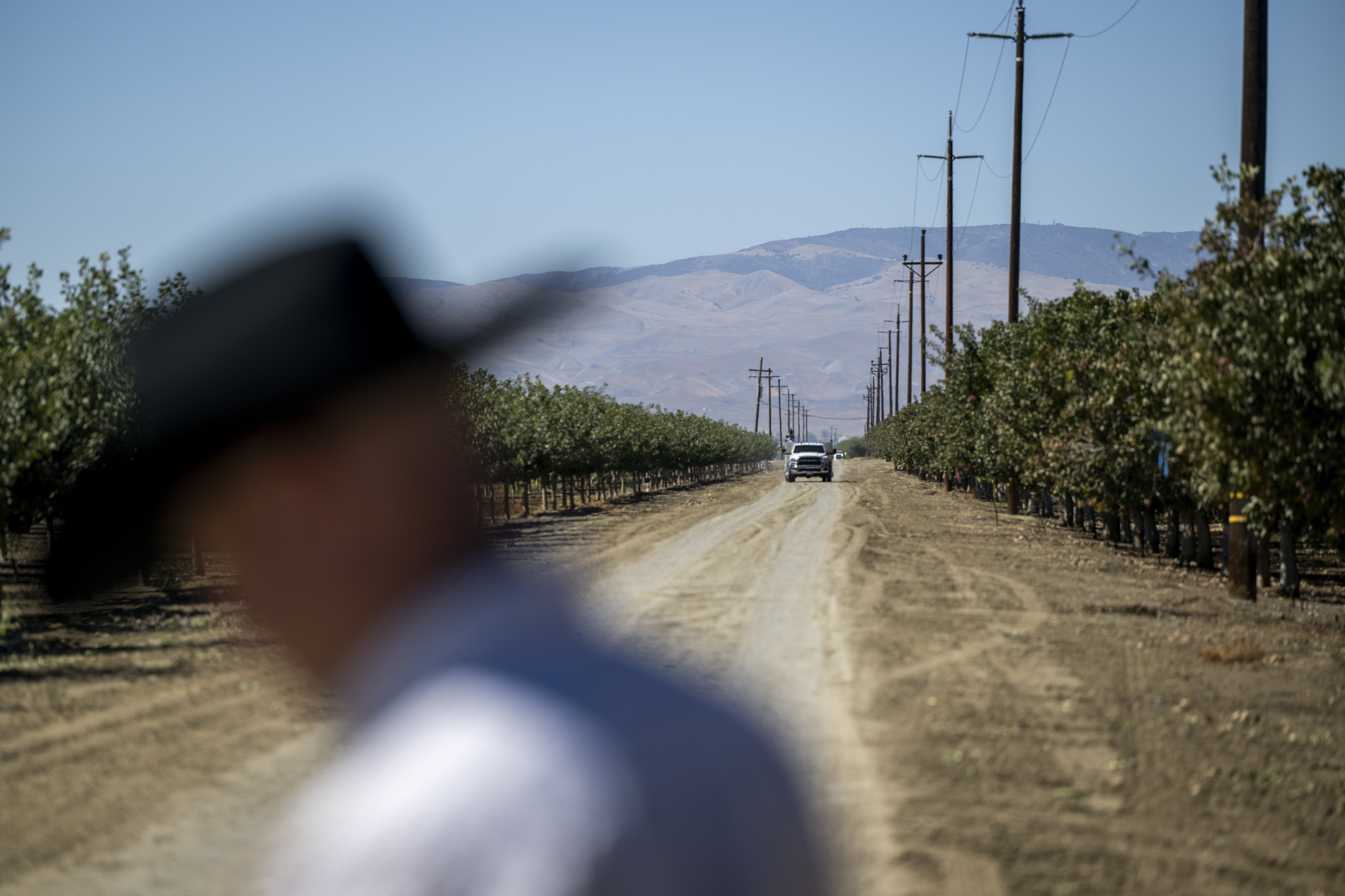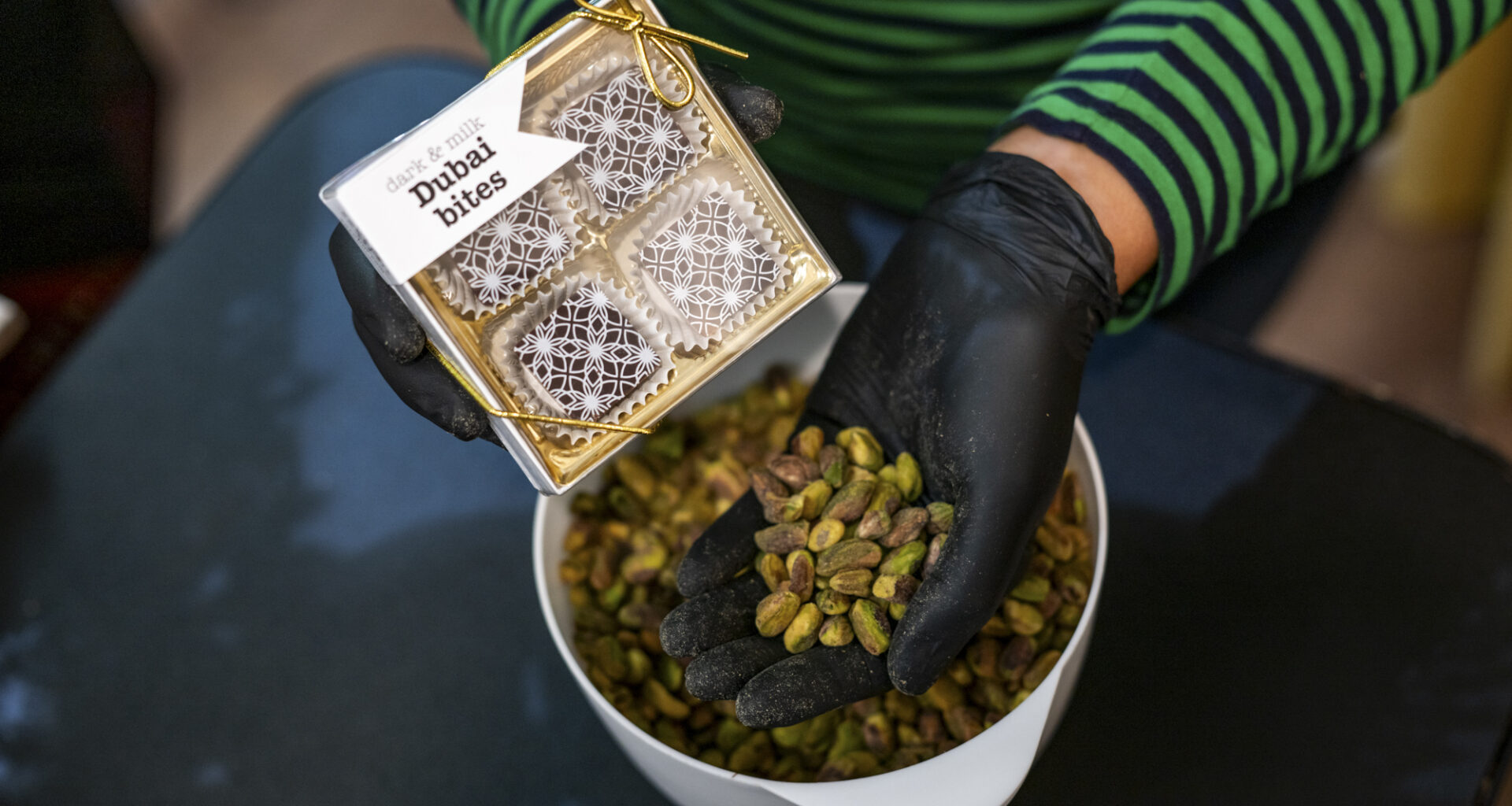But researchers warn that due to climate change, California faces a future where droughts will become more frequent and longer. Warmer temperatures could also increase soil salinity — how much salt is in the ground — and push farmers to use more water to counteract it.
In order to make every single drop of water count, growers have teamed up with environmentalists to design more efficient irrigation methods and in some instances, abandoning more water-intensive crops. But a drought that lasts multiple years could strain even pistachios, which can normally weather more saline conditions, says Phoebe Gordon, orchard systems advisor at the UC Agriculture and Natural Resources unit.
“How long can you keep on irrigating these trees under limited water conditions and have them continue to perform, to be able to pay the bills?” asks Gordon.
“Yield will decline — that is absolutely not a question,” she says.
The melting point
Outside of the Central Valley, climate change is coming for the other parts of your Dubai chocolate bar, too.
When droughts in West Africa caused cocoa prices to skyrocket earlier this year, Bay Area chocolatier López-Maggi had to let go half of her staff and shut down her wholesale business, which supplied over 400 retail stores.
 Boxes of Dubai chocolates sit on the shelf at The Xocolate Bar in Berkeley on Oct. 16, 2025. (Beth LaBerge/KQED)
Boxes of Dubai chocolates sit on the shelf at The Xocolate Bar in Berkeley on Oct. 16, 2025. (Beth LaBerge/KQED)
“Wholesale margins are already so thin that when your ingredient prices more than double — I mean, people are only willing to pay a certain amount for food,” she says. “So many of my colleagues went out of business.”
Cocoa prices are slowly coming back down to Earth, but López-Maggi is preparing for a future where climate change permanently alters the chocolate supply chain. In response to these fluctuating costs, big brands like Hershey’s and Mars are already marketing products with less chocolate content, or substituting it with cheaper alternatives like palm oil.
But nothing can replace the best ingredients, López-Maggi says. “Chocolate, it’s called theobroma cacao for a reason: food of the gods,” she says. “There’s all these special magic things about chocolate you just can’t fake.”
Back in the Central Valley, it’s farmworkers who are the first to feel the consequences when there’s not enough water here.
 Pistachio trees line the road at Joe Coelho’s family orchard in Coalinga, Calif., on Oct. 7, 2025. (Beth LaBerge/KQED)
Pistachio trees line the road at Joe Coelho’s family orchard in Coalinga, Calif., on Oct. 7, 2025. (Beth LaBerge/KQED)
“When we plant less, that equals less jobs for people,” says Joe Coelho, a Fresno County farmer and director of sustainability and member outreach for the industry group American Pistachio Growers. Many people who work his fields are from the small town of Mendota, a community where over 90% of residents are Latino. A large proportion of residents have recently arrived from El Salvador and about a third live below the federal poverty line.
According to the latest Census data, around half of Mendota residents are unemployed — a number that can spike dramatically during drought years.
“These are our friends, our family. I’ve spent years of my life bleeding in the fields with these people,” says Coelho, who grew up on a farm in nearby Riverdale. “Agriculture is the backbone of life out here in the Central Valley.”
Coelho first met fellow pistachio grower Bordeau when they were both in their teens. Decades later, the two have their own families and farms. They can talk about almost anything for hours: pistachios, new irrigation technologies and the heat from the Central Valley sun, which quickly evaporates any drop of water that falls on the soil here.
“We’re trying to find a way that we can still succeed,” Bordeau says. “Solutions exist, man.”

